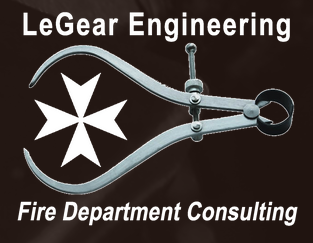Hydrants to Nozzles
Dennis LeGear
Date: July 17 and 18 (2-Day Workshop)
Class Time: 0800-1700
Location: Plainfield FPD (23748 W 135th St, Plainfield, IL 60585)
PPE: None
Hydrants to Nozzles class is a two-day workshop with Dennis LeGear taking a comprehensive look at engine layout, equipment spec (pumps/hose/nozzles) hydraulics, and its direct impact on strategies and tactics on the fire ground. Students of all ranks will build a strong foundation for success and be better prepared to make strategic and tactical decisions on the fire ground with a realistic working look at gold standard movement of water from the Hydrant to the Nozzle.
We will work with understanding how to best use the equipment you have at hand. while possibly suggesting changes to spec, deployment and equipment layout to vastly improve pumping operations, fire stream development (large and small) and apparatus placement.
Items discussed will include the following:
Pump theory (series, tandem, suction to suction, pumping)
Water supply and hydrants (understanding main distribution system)
Hydraulics (pump charts, updating them, simplifying them)
Operating from booster tank (transition to pressurized source)
High volume connections to hydrants (proper way to get the most out of a hydrant)
Single and multiple handlines pumping (line commitment, line responsibility, marking gauges)
Setting agency target flow and stream selections (both small and heavy streams)
Impact of air entrainment and stream selection (stream policy at Oakland and D.C.)
Type and design of handline nozzles (pros, cons, the good - the bad - the ugly)
Type and design/construction of hose supply and handline (hose fleet and its impact)
Wye operations (is it possible hydraulically, modern flow, trunk line pressure differential, Wye ops pitfalls)
Supplying FDC (sprinkler, sprinkler/standpipe combo, high-rise, double your water at pressure)
Master stream target flow and nozzle selections (rapid attack monitor vs engine deck gun vs platform vs
ladder)
Supplying MS, supplying aerials (supply vs attack pumper, master intake settings, aerial PRVs, reaction force limits, NP is 80 psi best?, nozzle selection)
If not laid out correctly or ideally, all of the above can and will alter your effectiveness on the fire ground before you ever put the engine in pump. This detailed pre-arrival approach will facilitate better possible extinguishment at all fires. We will also cover a comprehensive review of common sense approaches to engine work, which will reduce unnecessary complexities on the fire ground. We will make a re-commitment to basic efficient supply and attack packages with a goal to fully maximize the property and lifesaving potential of the engine company.
Anyone in a position to effect changes or in-charge of purchasing equipment is strongly encouraged to attend. Much of the suppression equipment has 10 to 20 years in service times. This class will assist in removing the specter of the 20 year purchasing mistake. The executive rank of the fire service and the rank and file needs more than just vendor interaction.
This class will not sell you anything but knowledge, and review items you already understand. The goal is to jointly create a base understanding of all these interrelated items and their fire ground impacts. Lessons learned can be taken back to your agencies and worked, tested, researched, etc. to assist your agency in the goal of ensuring the best system possible for fire stream development for your jurisdiction.




